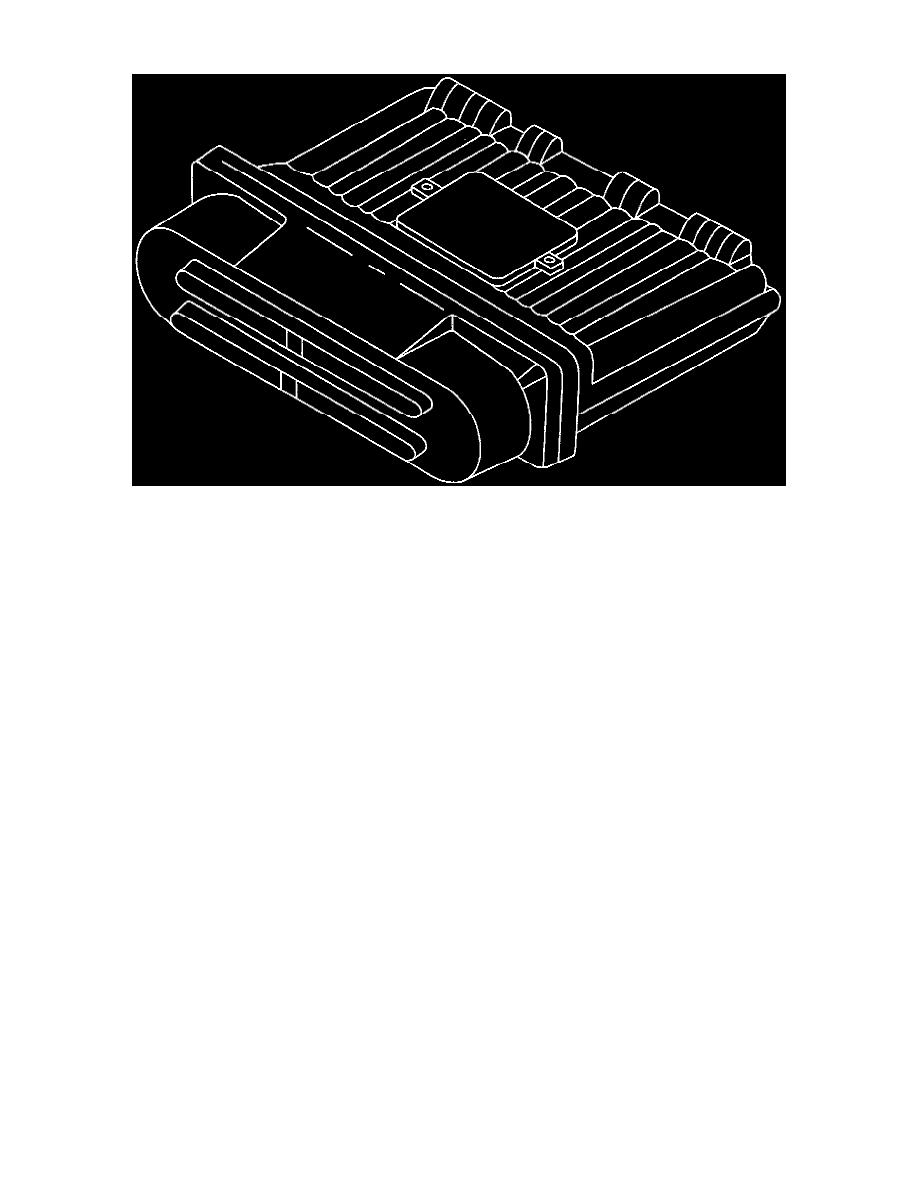Camaro V6-3.8L VIN K (1995)

Engine Control Module: Description and Operation
Figure C1-1 - Powertrain Control Module (PCM)
DESCRIPTION
The Powertrain Control Module (PCM), located behind the right front strut tower under the hood, is the control center of the vehicle. It controls
the following:
^
Fuel metering system.
^
Transmission shifting.
^
Ignition timing.
^
On-board diagnostics for Powertrain functions.
It constantly looks at the information from various sensors, and controls the systems that affect vehicle performance. The PCM also performs the
diagnostic function of the system. It can recognize operational problems, alert the driver through the MIL (Service Engine Soon), and store
diagnostic trouble codes which identify the problem areas to aid the technician in making repairs. The PCM consists of two parts: a controller (the
PCM without the Knock Sensor module) and the Knock Sensor module.
OPERATION
The PCM supplies either 5 or 12 volts to power various sensors or switches. This is done through resistances in the PCM which are so high in
value that a test light will not light when connected to the circuit. In some cases, even an ordinary shop voltmeter will not give an accurate reading
because its resistance is too low. Therefore, a digital voltmeter with at least 10 megohms input impedance is required to ensure accurate voltage
readings.
The PCM controls output circuits such as the injectors, IAC, cooling fan relays, etc. by controlling the ground or power feed circuit through
transistors or a device called a "Output Driver Module."
EEPROM
The Electrically Erasable Programmable Read Only Memory (EEPROM) is a permanent memory that is physically soldered within the PCM. The
EEPROM contains program and calibration information that the PCM needs to control powertrain operation.
Unlike the PROM used in past applications, the EEPROM is not replaceable. If the PCM is replaced, the new PCM will need to be programmed.
Techline equipment (Tech-1 or a Tech-2) containing the correct program and calibration for the vehicle is required to program the PCM.
KS Module
The PCM contains a replaceable Knock Sensor (KS) module. The KS module contains the circuitry that allows the PCM to utilize the KS signal
and diagnose the KS sensors and circuitry. If the PCM is replaced, the KS module needs to be transferred from the original PCM. If the KS
module is missing or faulty causing a continuous knock condition to be indicated, the PCM will set DTC P0325.
